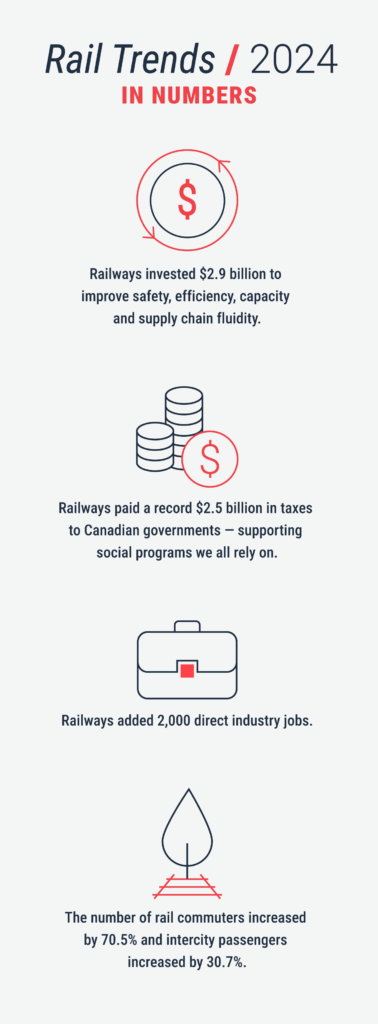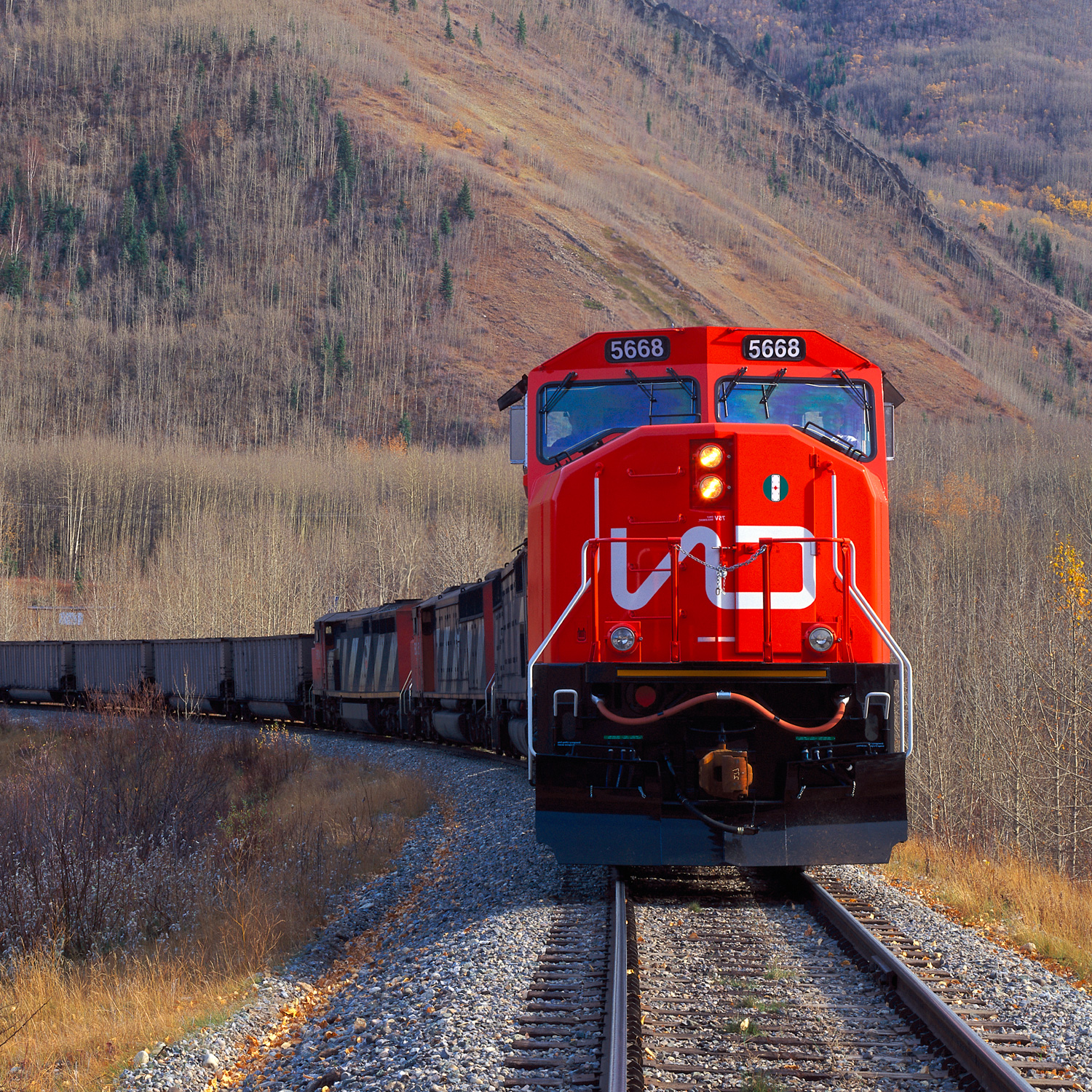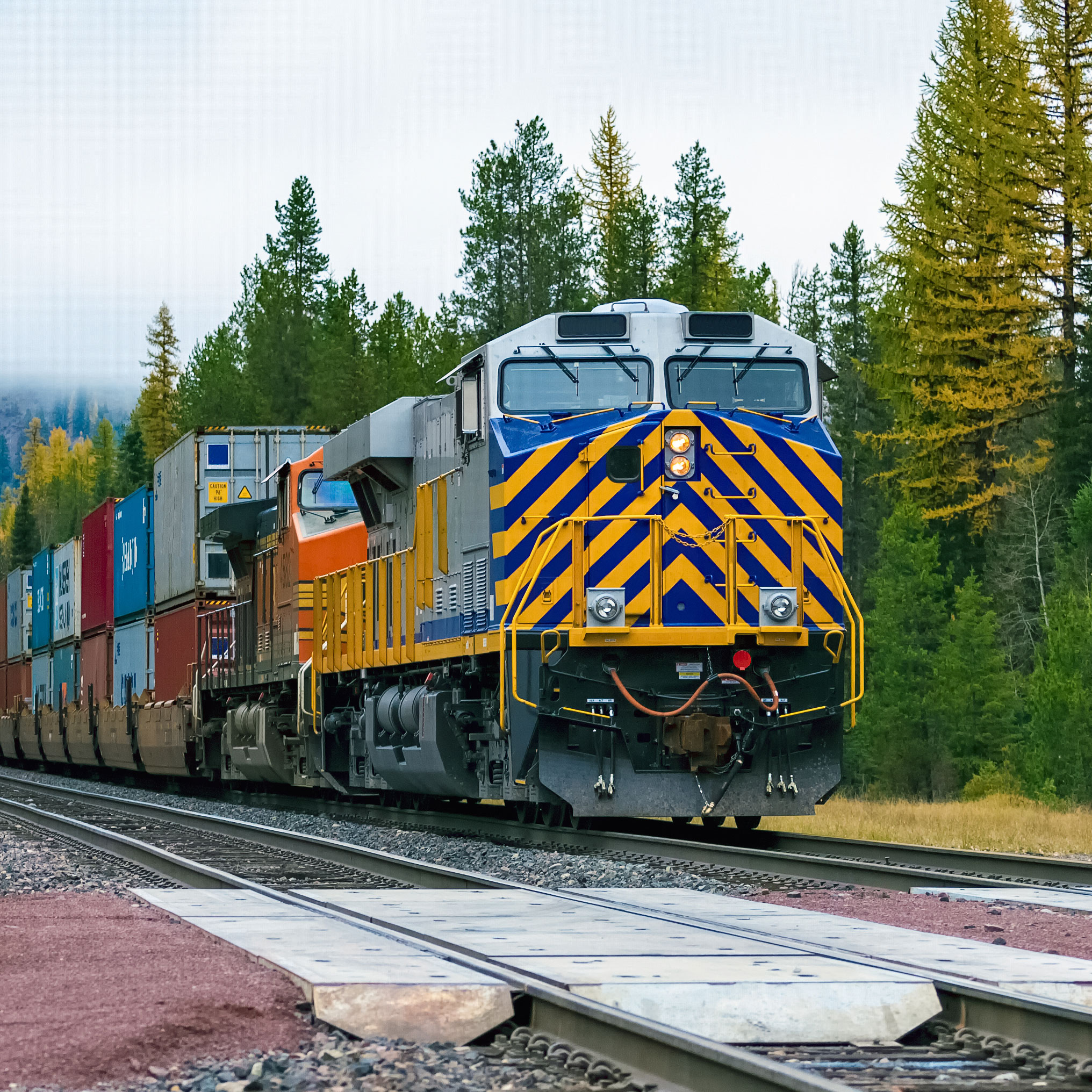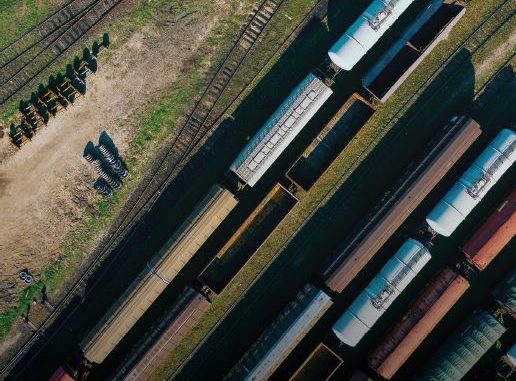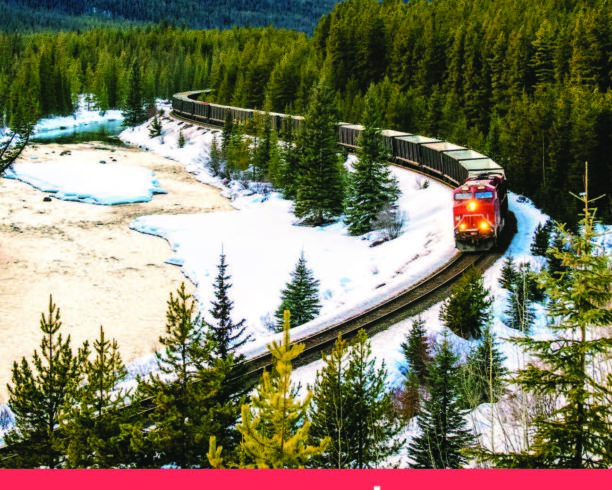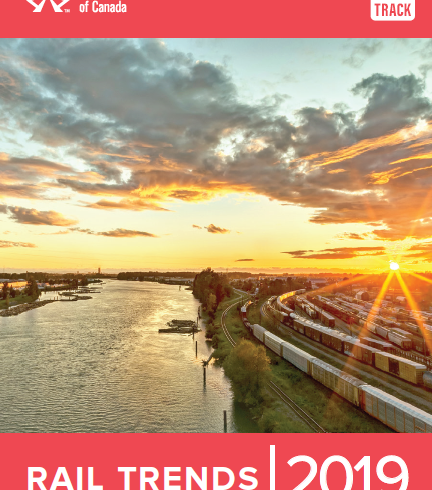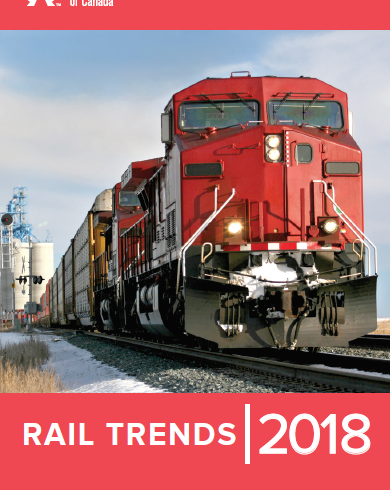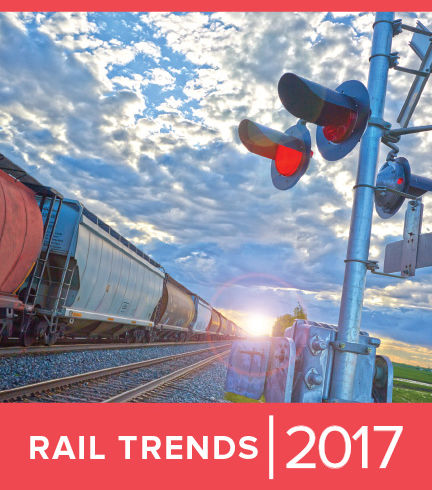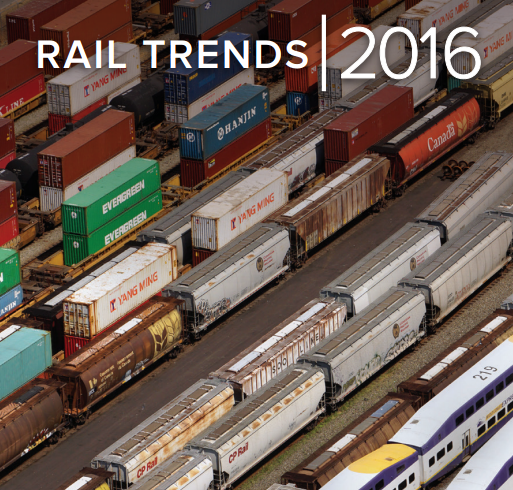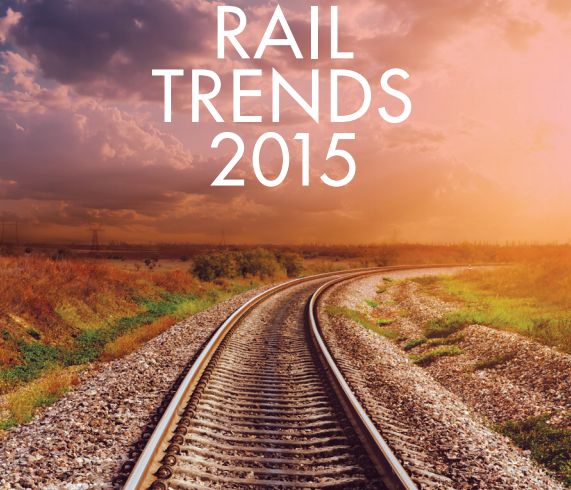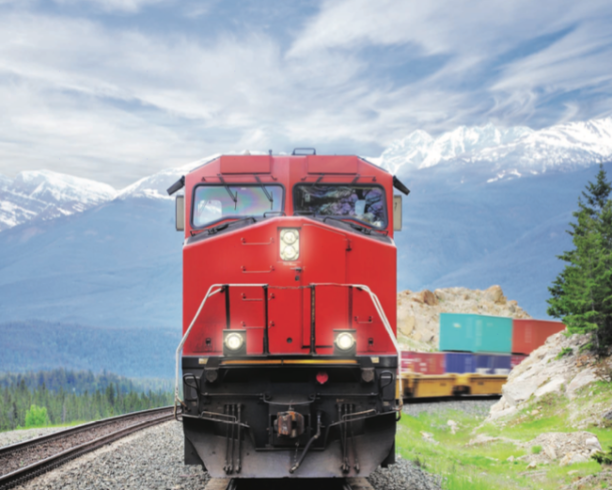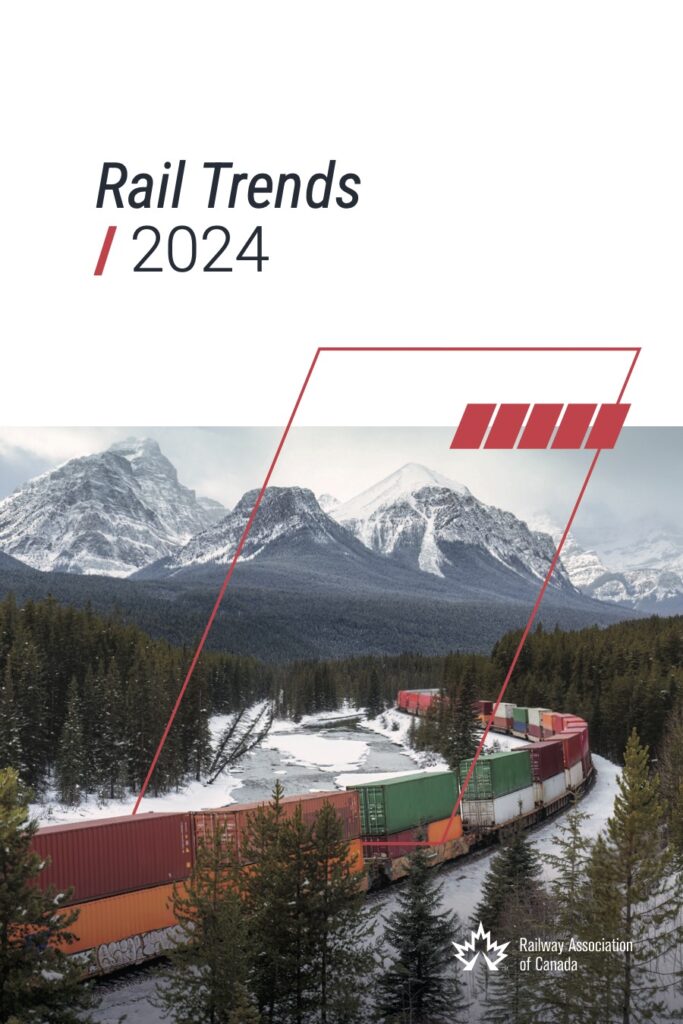
This is the 32nd edition of Rail Trends. For over 30 years, the Railway Association of Canada (RAC) has issued its annual report on Canada’s rail industry. This publication contains a rolling 10-year review of financial and statistical results, reflecting multiple aspects of railway performance in Canada. This edition covers the 2014 to 2023 period.
For More Information, Please Contact:
Jonathan Thibault
JThibault@railcan.ca
Rail Trends 2024
Canada’s railways are making an investment in this country’s future. These investments enhance the safety, efficiency, and capacity of the Canadian rail network, which underpins cost-effective supply chains. These are investments in people, good jobs, and essential public services (through record tax contributions). Moreover, investments in rail help to reduce Canada’s transportation sector emissions, as rail continues to be the most fuel efficient mode of ground transportation available.
In 2023, Canadian railways invested $2.9 billion in their Canadian assets, bringing the total to more than $22.7 billion over the past decade. These investments in track, rolling stock, technology, and other equipment improve the safety, efficiency, capacity, and fluidity of Canadian supply chains. In fact, average railway dwell times remained below ten hours in 2023, while ports’ average terminal dwell times and delays for late marine vessels remained above 100 hours.
The safety performance of Canada’s railways in 2023 was exceptional. Compared to 2022, the total number of accidents decreased by 8.5%, the passenger train accident rate improved by 52.4%, the freight accident rate improved by 7.7%, and the dangerous goods accident rate decreased by 15.9%.
Rail freight rates remained amongst the most competitive in the world, supporting cost-effective supply chains, which is critical for a country where trade is equal to two-thirds of its GDP. Rail freight rates increased by just 2.1% compared to a 3.9% increase in the Consumer Price Index. Since 1998, following enactment of the National Transportation Act, 1987, railway freight rates have increased by much less than consumer prices, industrial product prices, and commodity prices, all of which have more than doubled.
Canada’s railways continued to make significant investments in people. The average industry wage increased by $1,700 to over $106,000, which is approximately 50% higher than the average full-time Canadian salary. Railways added 2,000 direct industry jobs, bringing the workforce to 37,400 strong—37,400 dedicated railroaders that work through all conditions to deliver for Canadians and the future of Canada’s economy. And this workforce better reflected the diversity of Canadians than in years past, as the representation of women and workers from diverse groups increased—including persons with disabilities, visible minorities, and Indigenous peoples.
In 2023, the rail sector maintained its status as the most fuel-efficient means of transporting goods and people over land. Freight and passenger railways will continue to play a key role in the decarbonization of Canada’s transportation sector and the economy overall. Freight railways were able to move one tonne of goods 228 kilometres on a single litre of fuel. Passenger railways regained more of the ridership that they had lost during the pandemic, year-over-year, the number of commuters increased by 70.5% and intercity passengers increased by 30.7%.
Regarding taxation, the industry set a consecutive record for taxes paid to federal and provincial governments—more than $2.5 billion, representing a 12.8% year-over-year increase.
Despite the positive momentum created by the solid performance of Canada’s railways, there exist serious challenges for the industry that put supply chain improvement and investment at risk. These are not insurmountable. In fact, the government could take decisive action to minimize these risks and create opportunities for growth.
Canadian labour instability and frequent work stoppages (or threat thereof) are increasingly impacting supply chain performance and Canada’s reputation as a reliable trading partner. The 13-day B.C. ports strike in July 2023 brought Canadian supply chains to a standstill and its impacts have shown to be lasting. This is just one example in a wave of labour disruption that continues to threaten important trading and business relationships.
The country needs a supportive tax environment to support Canadian competitiveness. Implementing accelerated depreciation measures for all supply chain players would increase investment and bolster Canadian supply chains, supporting all economic sectors. First-mile last-mile rail infrastructure could be strengthened through a track maintenance tax credit. Programs at both the federal and state level have shown to be effective at driving significant investment in shortline rail infrastructure in the U.S.
Lastly, there needs to be a pause, and reverse, on the ever-increasing regulatory burden and economically damaging policies like extended regulated interswitching. In a country like Canada that is in need of an economic boost, there is no place for such policies that threaten unionized jobs, put a disincentive on investment and place Canadian railways at a competitive disadvantage vis-a-vis American ones.
Industry and government can work together to address these issues and foster the conditions for investment and prosperity moving forward.
